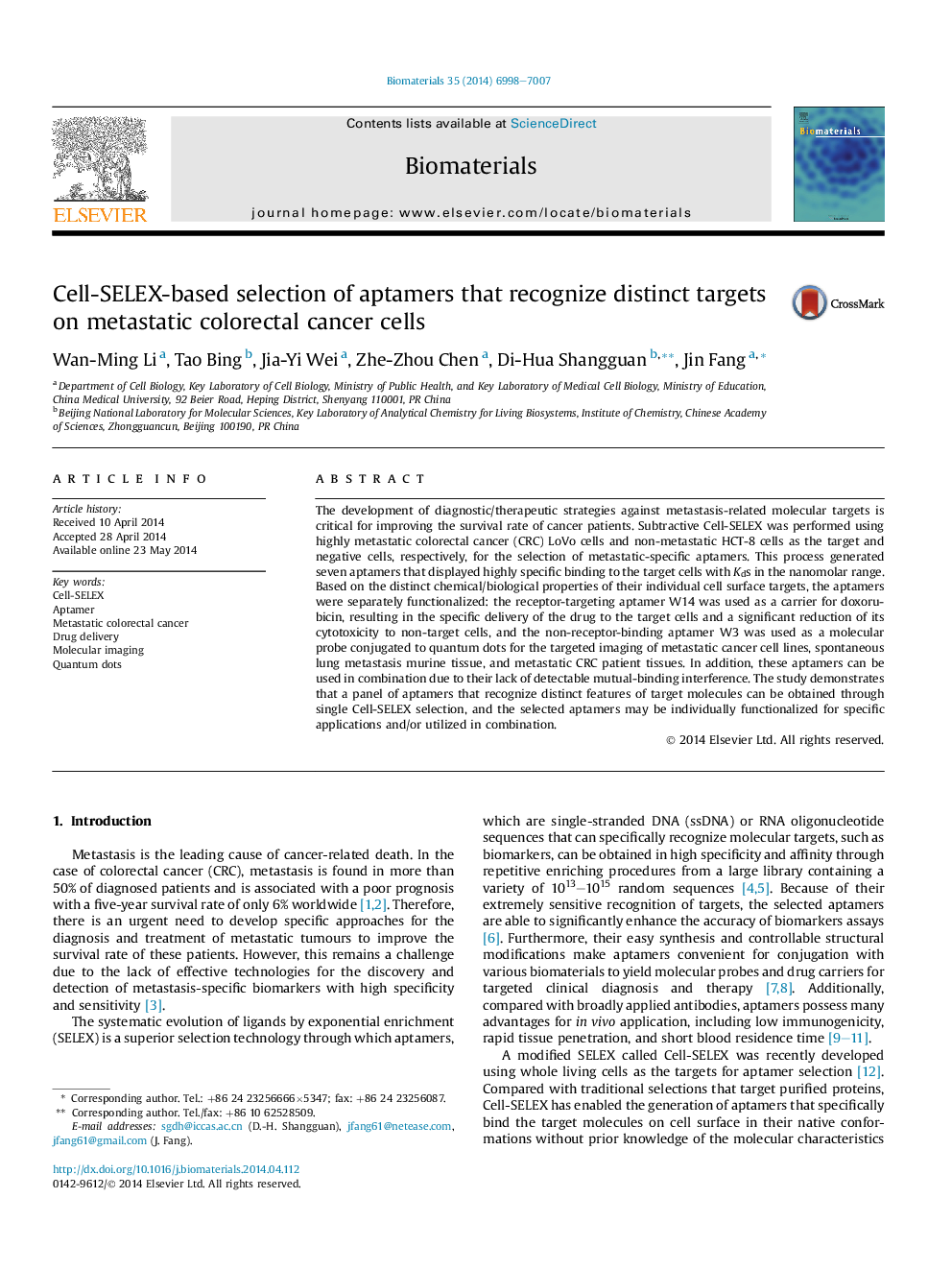| Article ID | Journal | Published Year | Pages | File Type |
|---|---|---|---|---|
| 10227548 | Biomaterials | 2014 | 10 Pages |
Abstract
The development of diagnostic/therapeutic strategies against metastasis-related molecular targets is critical for improving the survival rate of cancer patients. Subtractive Cell-SELEX was performed using highly metastatic colorectal cancer (CRC) LoVo cells and non-metastatic HCT-8 cells as the target and negative cells, respectively, for the selection of metastatic-specific aptamers. This process generated seven aptamers that displayed highly specific binding to the target cells with Kds in the nanomolar range. Based on the distinct chemical/biological properties of their individual cell surface targets, the aptamers were separately functionalized: the receptor-targeting aptamer W14 was used as a carrier for doxorubicin, resulting in the specific delivery of the drug to the target cells and a significant reduction of its cytotoxicity to non-target cells, and the non-receptor-binding aptamer W3 was used as a molecular probe conjugated to quantum dots for the targeted imaging of metastatic cancer cell lines, spontaneous lung metastasis murine tissue, and metastatic CRC patient tissues. In addition, these aptamers can be used in combination due to their lack of detectable mutual-binding interference. The study demonstrates that a panel of aptamers that recognize distinct features of target molecules can be obtained through single Cell-SELEX selection, and the selected aptamers may be individually functionalized for specific applications and/or utilized in combination.
Related Topics
Physical Sciences and Engineering
Chemical Engineering
Bioengineering
Authors
Wan-Ming Li, Tao Bing, Jia-Yi Wei, Zhe-Zhou Chen, Di-Hua Shangguan, Jin Fang,
